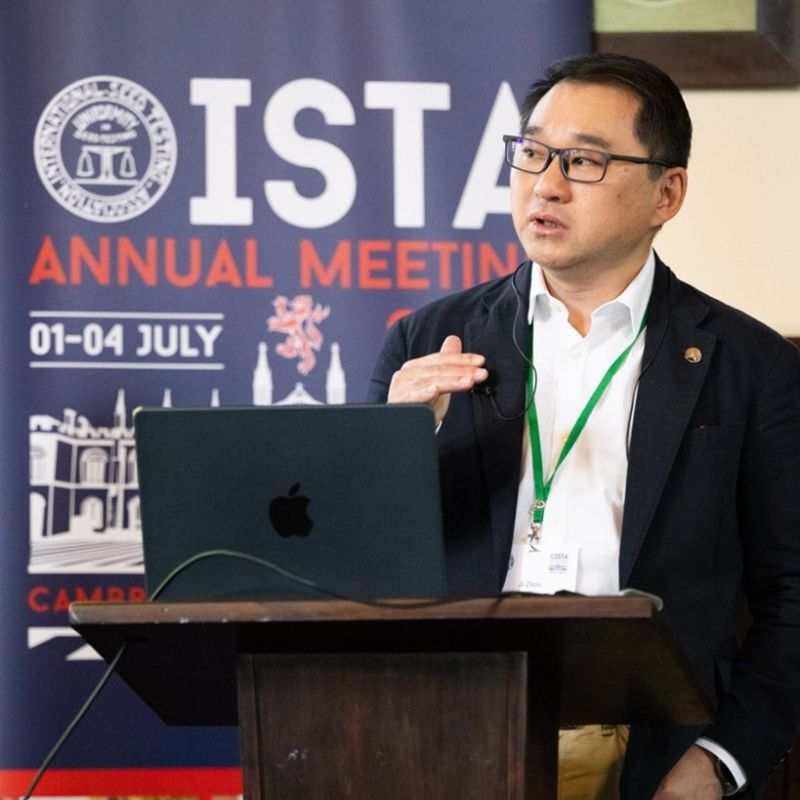
Ji Zhou
Head of Data Sciences Department
Research group: Artificial intelligence and data sciences

Biography
Ji Zhou (周济) is an expert in multi-scale plant phenotyping, computer vision (CV) based trait analysis, AI-assisted cereal breeding, and artificial intelligence (AI) predictive modelling. Presently, he is a senior group leader at the Chinese Academy of Sciences (CAS) Center for Excellence in Molecular Plant Sciences, in Shanghai. He and his lab have been continuously contributing to the global plant and crop research community, including AI- and CV-powered analytic solutions for assessing seed quality and vigour (e.g. SeedGerm and SeedGerm-VIG), screening nitrogen use efficiency wheat varieties using LiDAR (CropQuant-3D), performing drone phenotyping to measure growth- and yield-related trait for rice (AirMeasurer) and horticultural crops such as pears and apples (OrchardQuant-3D), establishing ultra-scale yield prediction for lettuces (AirSurf), and monitoring growth patterns (CropSight), yield formation (YieldQuant-Mobile), and disease dynamics of Fusarium head blight (FHB-YOLO) in wheat. These studies were enabled by cross-disciplinary research with groups in the UK (e.g. University of Cambridge, UoC, NIAB, and John Innes Centre, JIC), France (e.g. INRAe and University of Angers), Japan (Tokyo University), and China (CAS, and Nanjing Agricultural University, NAU).
Ji is a Fellow of the Royal Society of Biology (FRSB), an associate editor for journals such as Horticulture Research, Plant Phenomics, and The Crop Journal. Since 2013, he has published 35+ research articles (both English and Chinese) in leading academic journals. At CSC, Ji collaborates with Prof Eves-van den Akker for plant-nematode interactions, as well as Prof Ian Henderson for AI-powered genome annotation and prediction. Besides, Ji works closely with breeding and growing companies such as Bayer Crop Science, Syngenta, and the POME consortium. He holds a Professorship at NAU and CAS, course lecturer and project supervisor for MPhil in crop improvement and computer science undergraduates at UoC. Prior to CAS, Ji was the Head of Data Sciences Department at NIAB, project leader at Earlham, joint research fellow between JIC and TGAC, and a post-doctoral researcher at The Sainsbury Laboratory in Norwich UK. Before his academic career, he worked in industry for nearly a decade, initially as a bilingual IT professional in Shanghai, then a systems analyst and a project consultant at Norwich Union, Aviva UK.
Publications
Publication
OrchardQuant‐3D: combining drone and LiDAR to perform scalable 3D phenotyping for characterising key canopy and floral traits in fruit orchards
Date: 23 July 2025
Contributors: Yunpeng Xia, Hanghang Li, Fanhang Zhang2, Gang Sun, Kaijie Qi, Robert Jackson, Felipe Pinheiro, Xiaoman Liu, Yue Mu, Shaoling Zhang, Greg Deakin, E Charles Whitfield, Shutian Tao, Ji Zhou
Journal: Plant Biotechnology Journal
Publication
AirMeasurer: open-source software to quantify static and dynamic traits derived from multi-seas7on aerial phenotyping to empower genetic mapping studies in rice.
Date: 28 July 2022
Contributors: Sun G, Lu H, et al., Han B*, Zhou J*
Journal: New Phytologist
Publication
Large-scale field phenotyping using LiDAR and CropQuant-3D to measure structural responses in wheat.
Date: 16 July 2021
Contributors: Zhu Y, Sun G, Ding G, et al., Ober E, Zhou J*
Journal: Plant Physiology
Publication
SeedGerm: a cost-effective phenotyping platform for automated seed imaging and machine-learning based phenotypic analysis of crop seed germination
Date: 13 June 2020
Contributors: Colmer J, et al., Penfield S*, Zhou J*
Journal: New Phytologist
Publication
Combining computer vision and deep learning to enable ultra-scale aerial phenotyping and precision agriculture: a case study of lettuce
Date: 1 June 2019
Contributors: Bauer, A., Bostrom, A.G., Ball, J., Applegate, C., Cheng, T., Laycock, S., Rojas, S.M., Kirwan, J. and Zhou, J
Journal: Horticulture Research